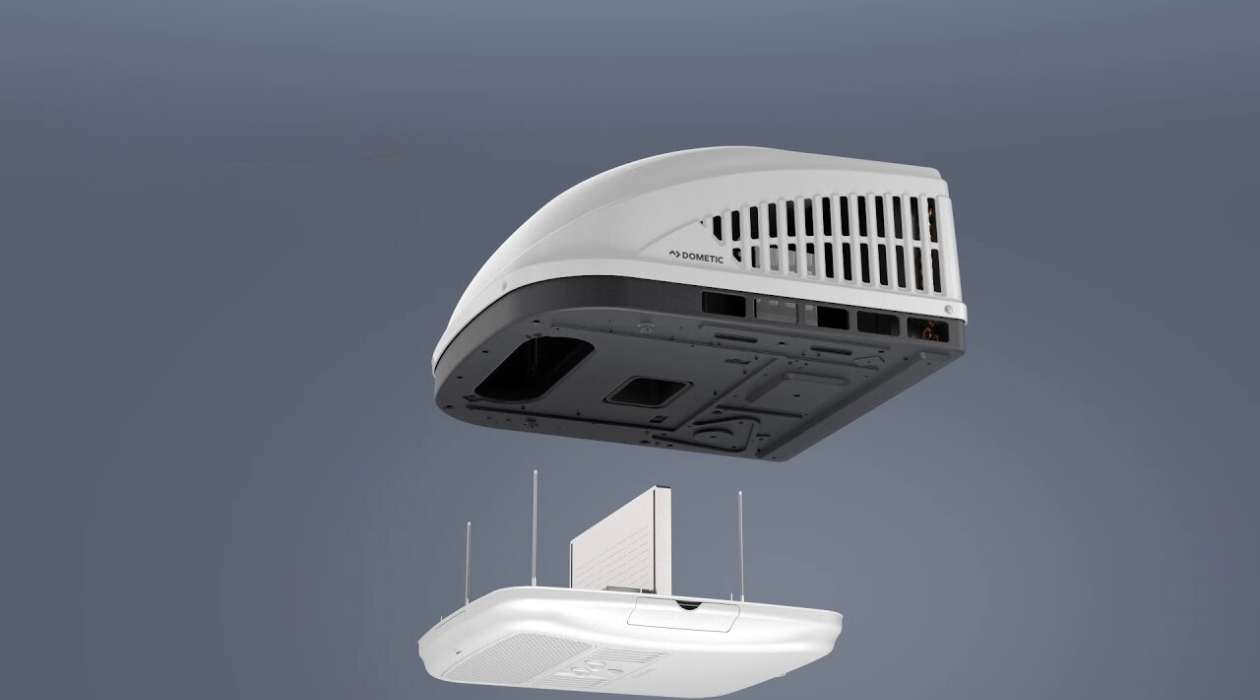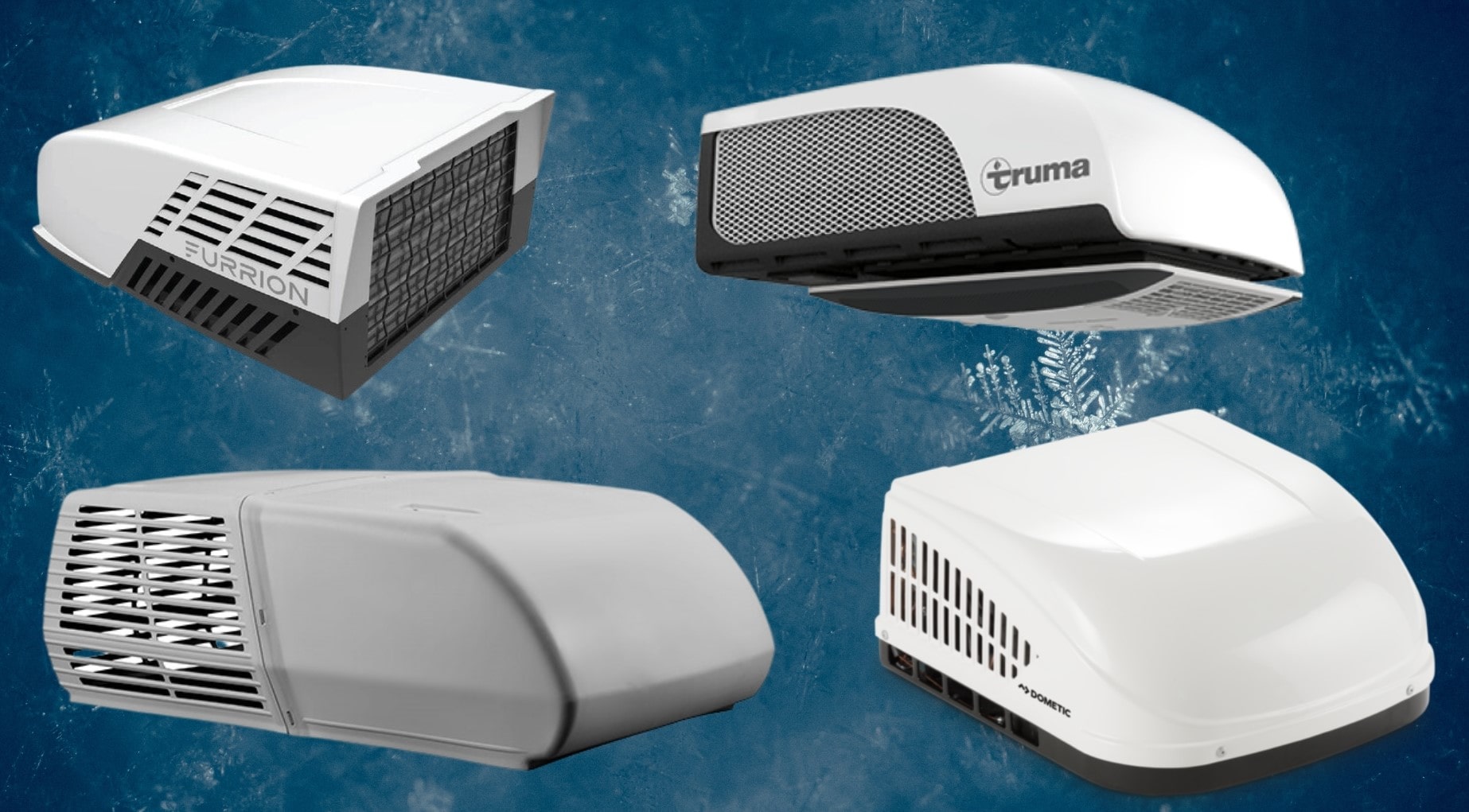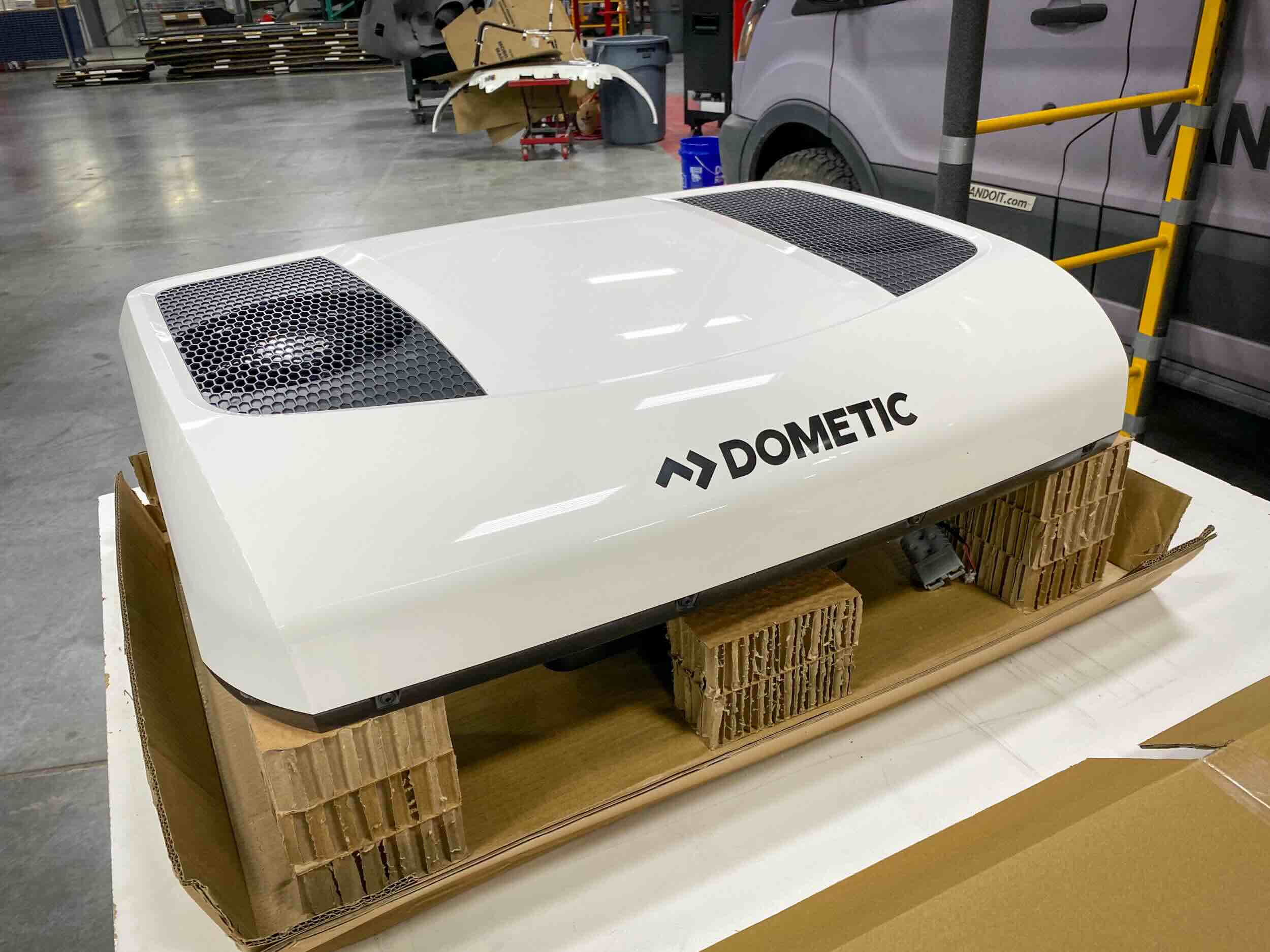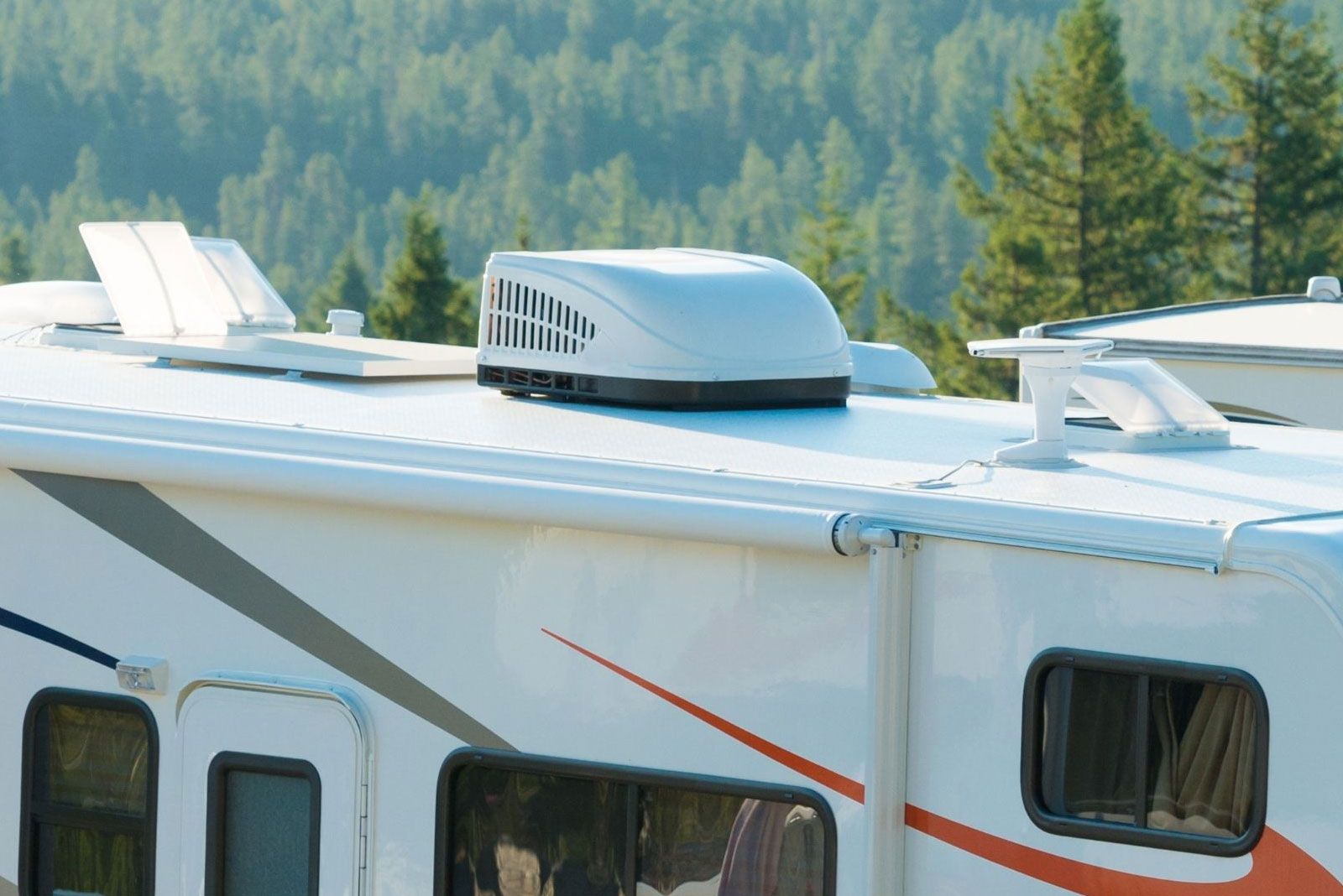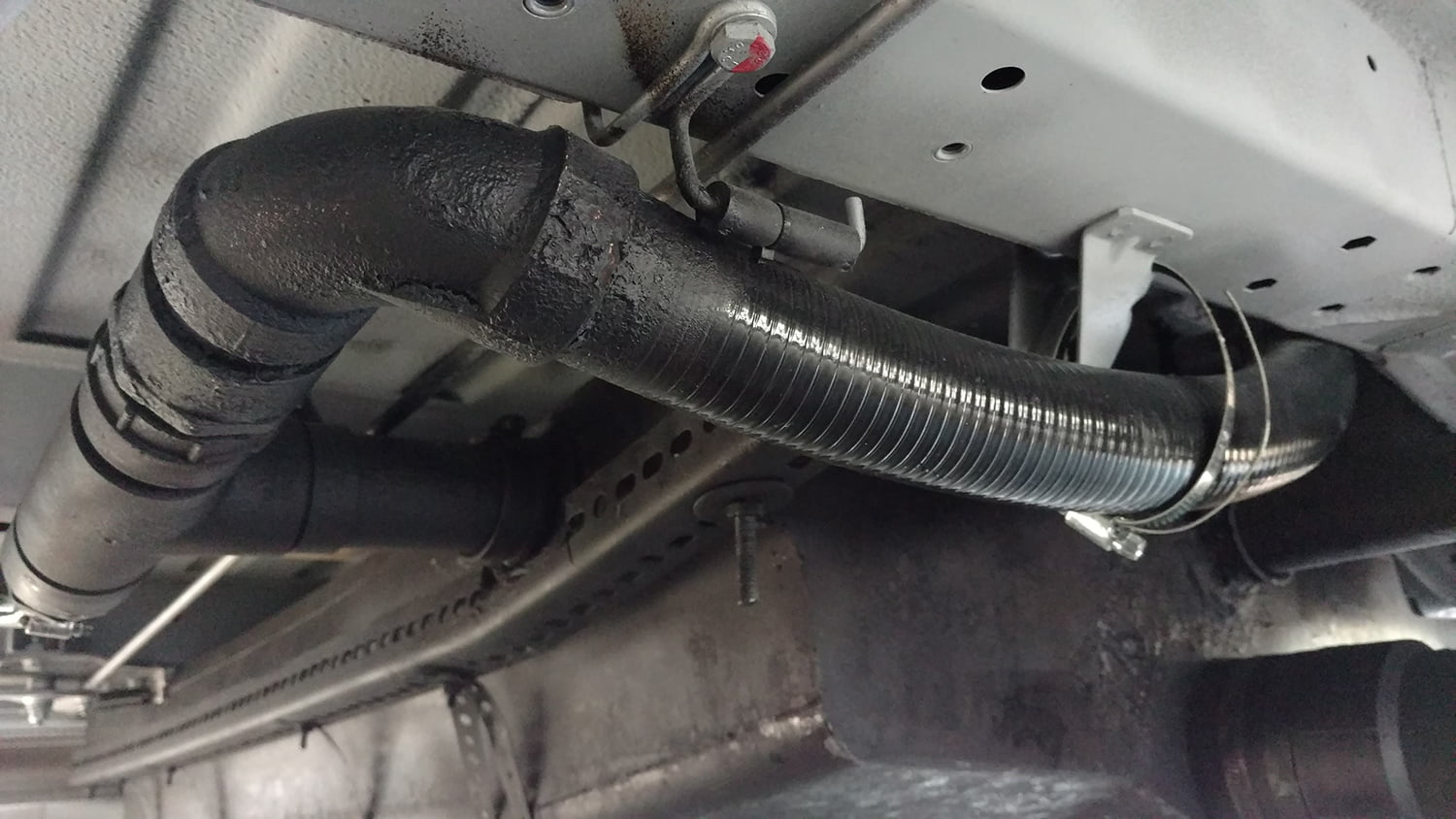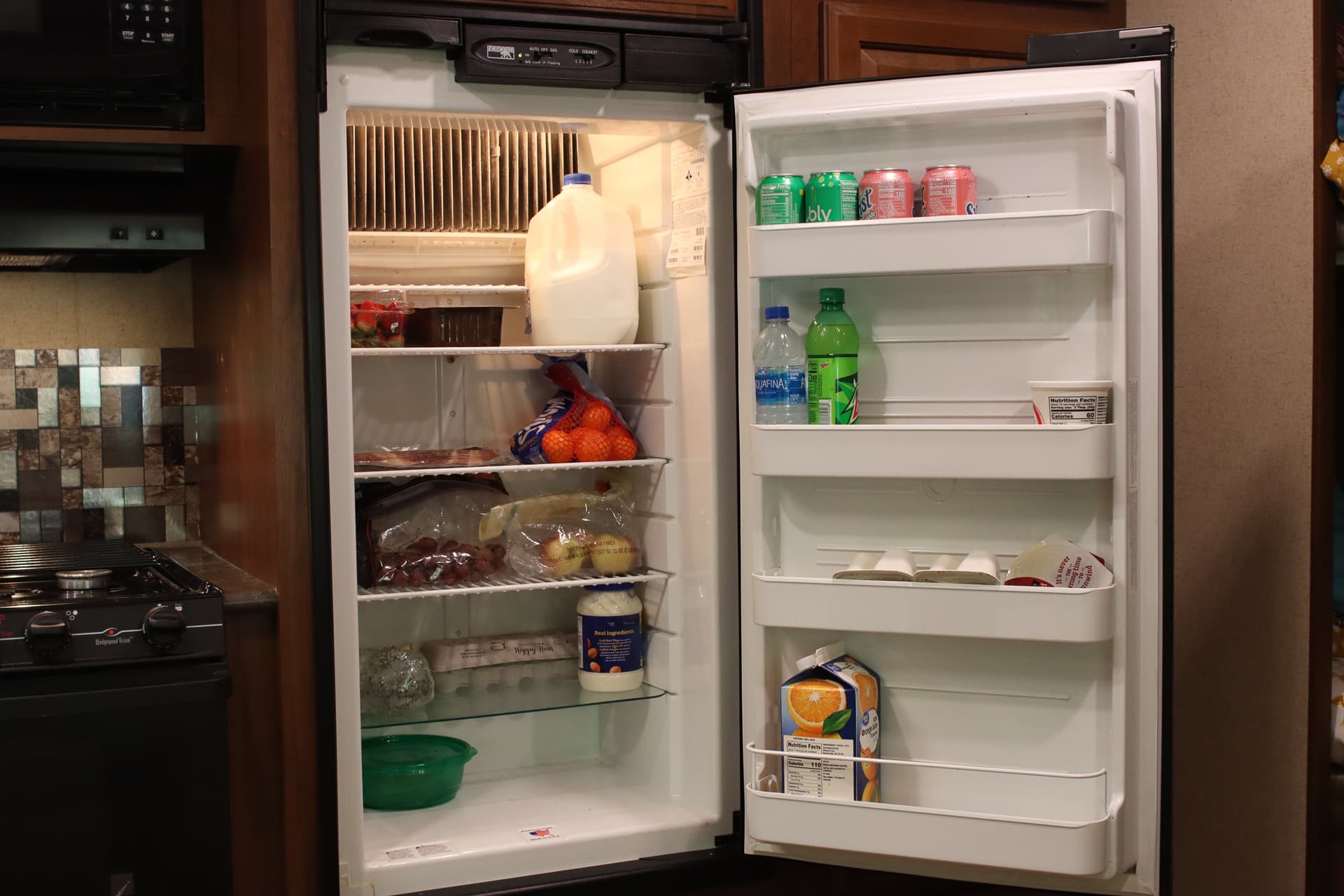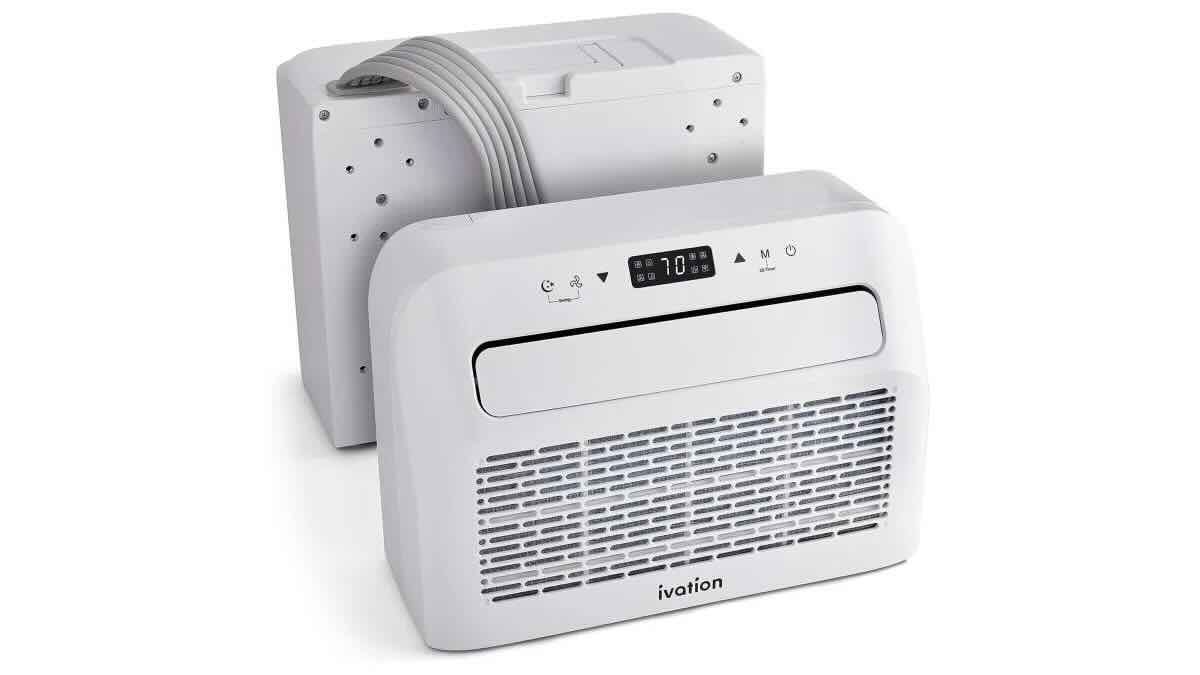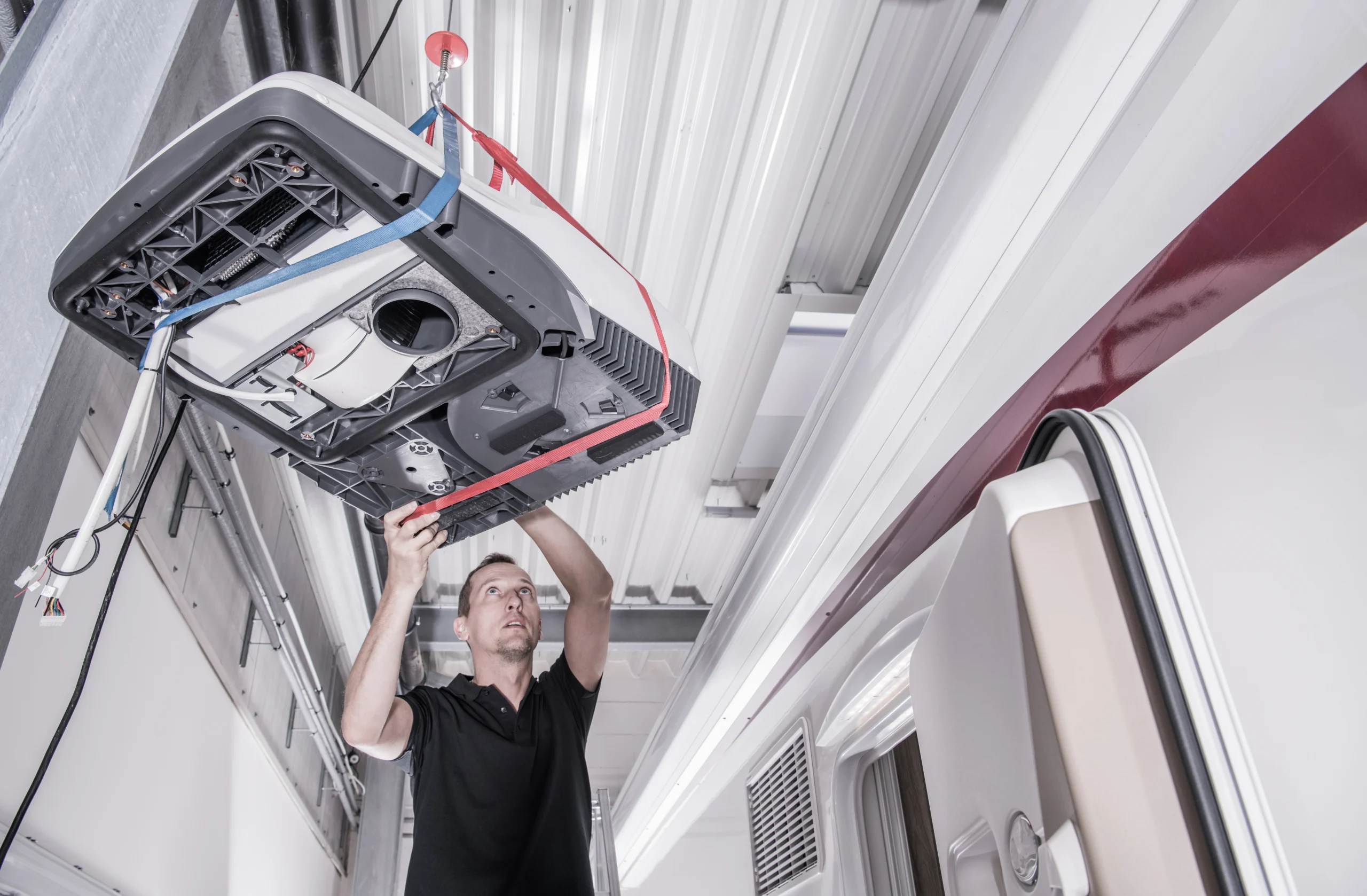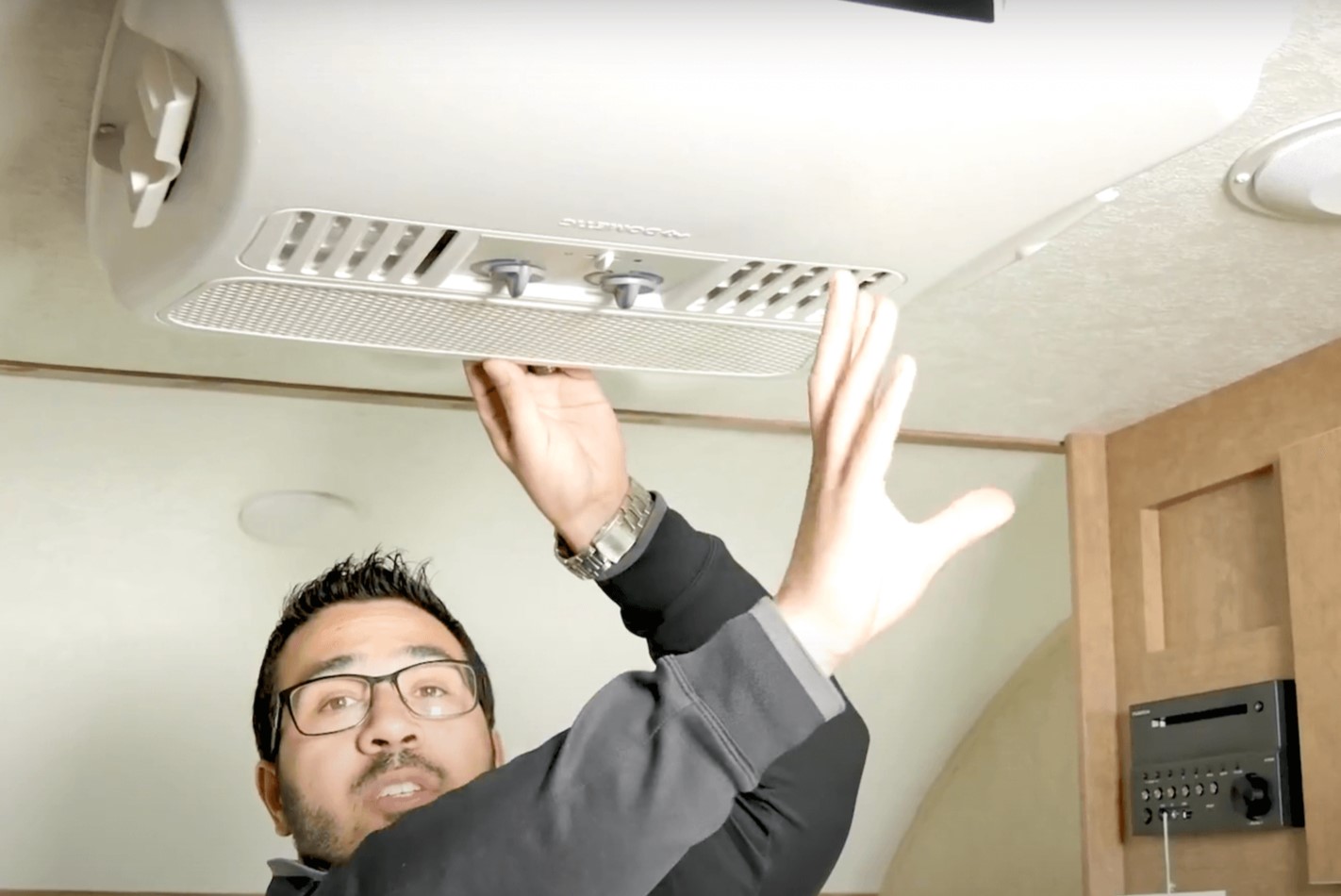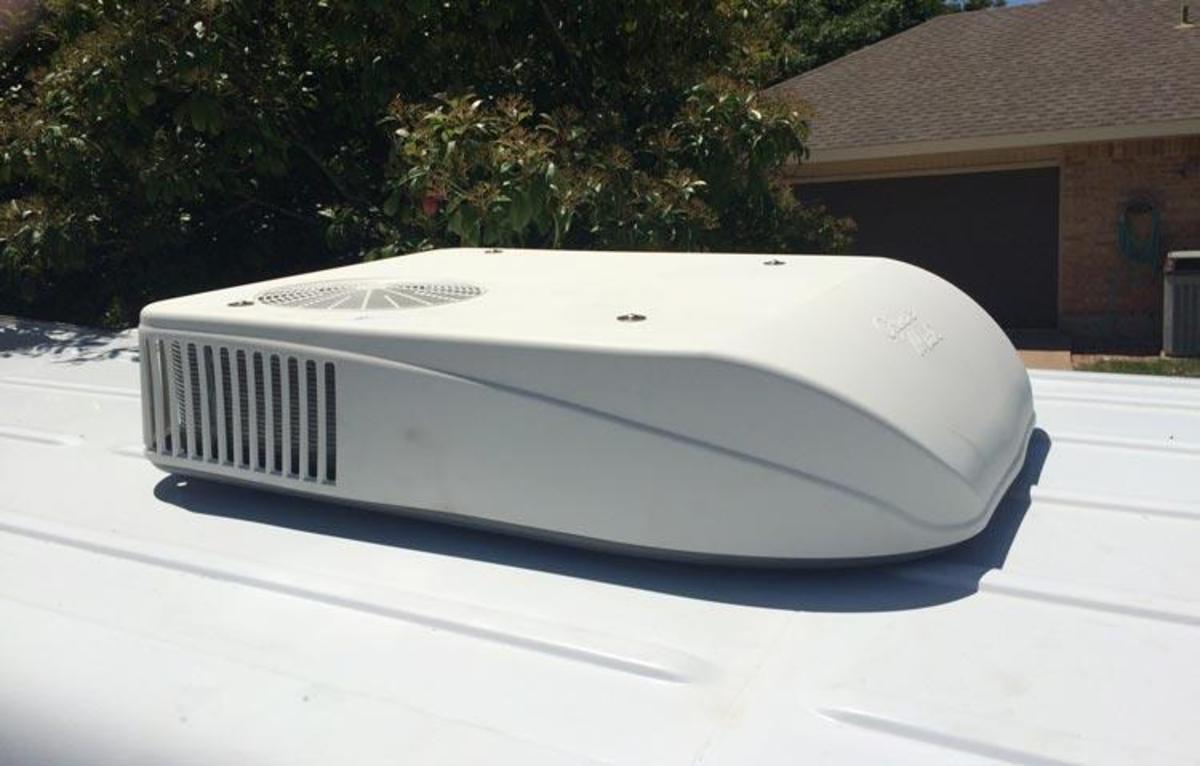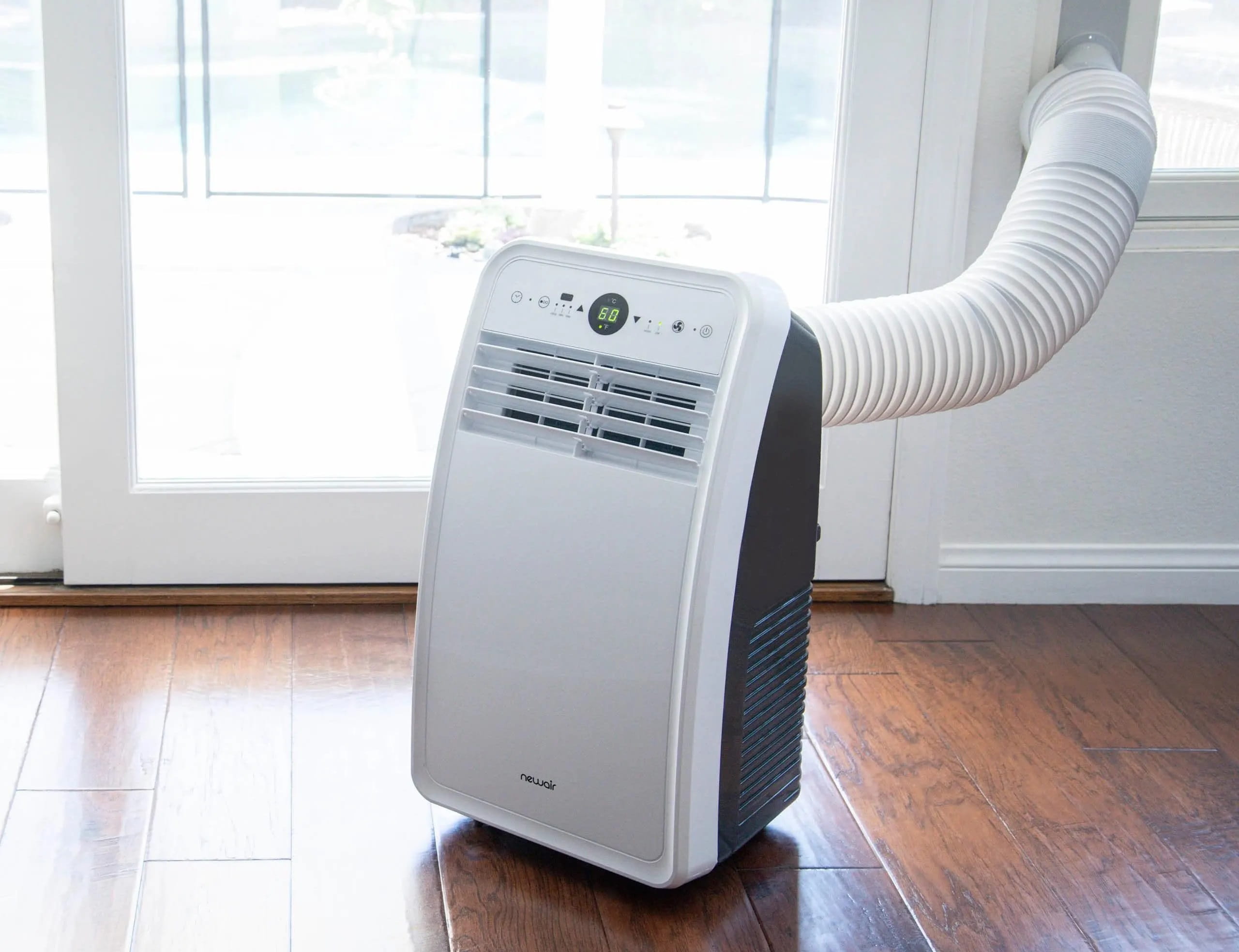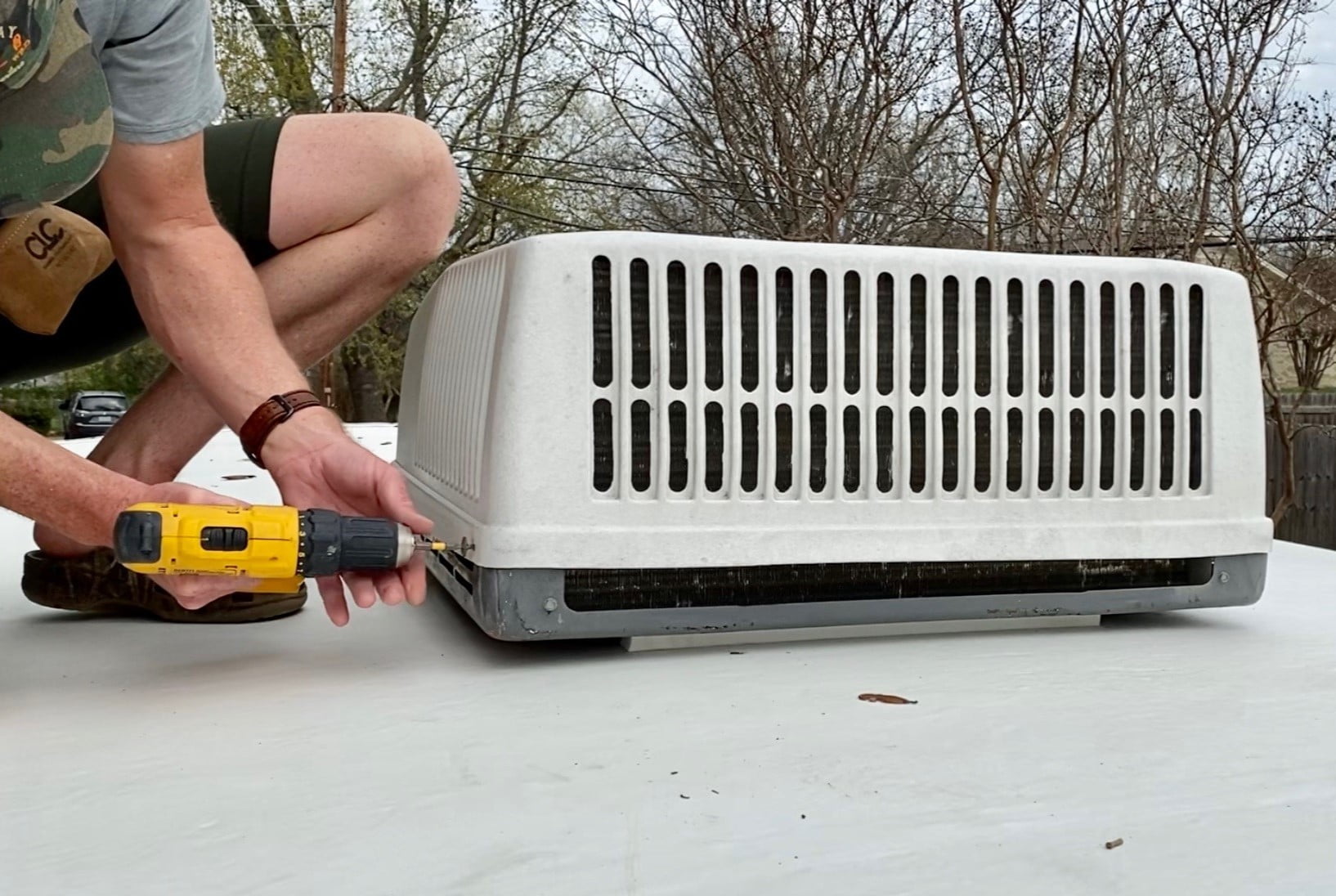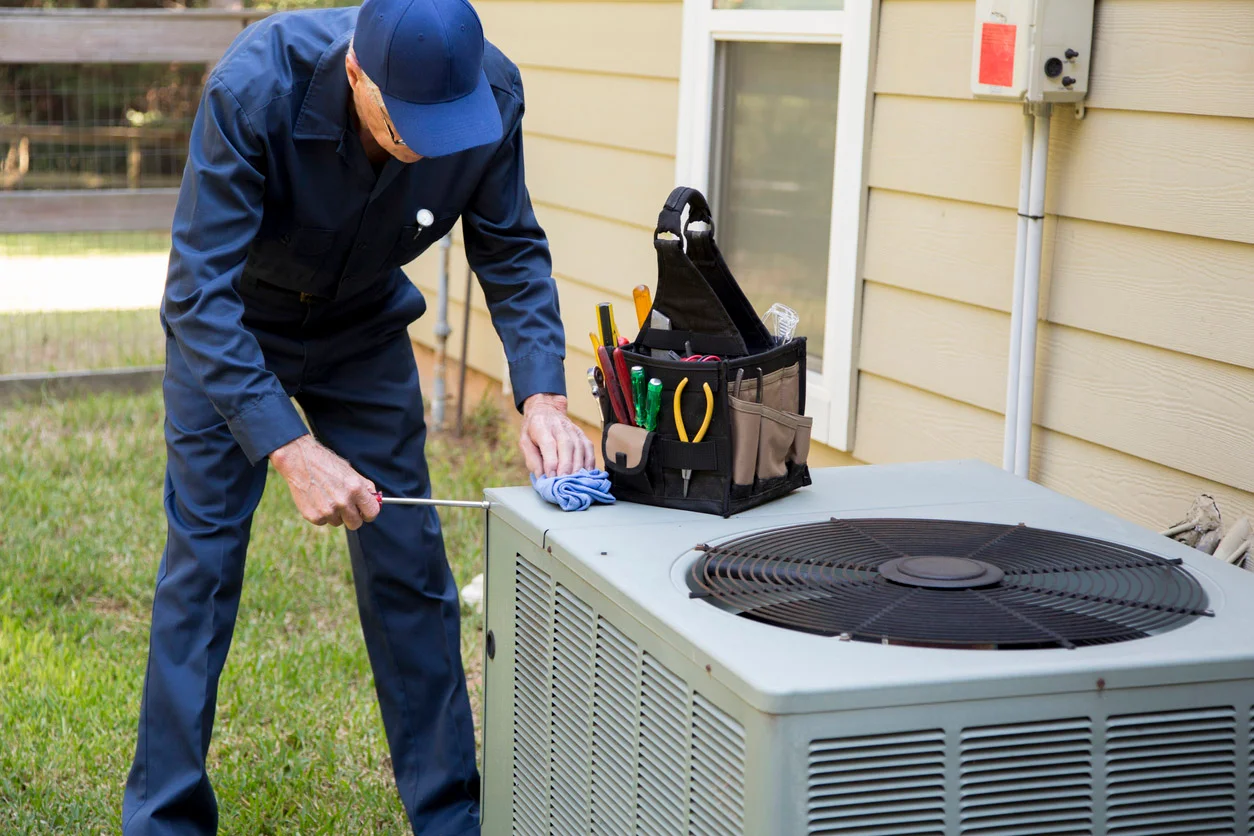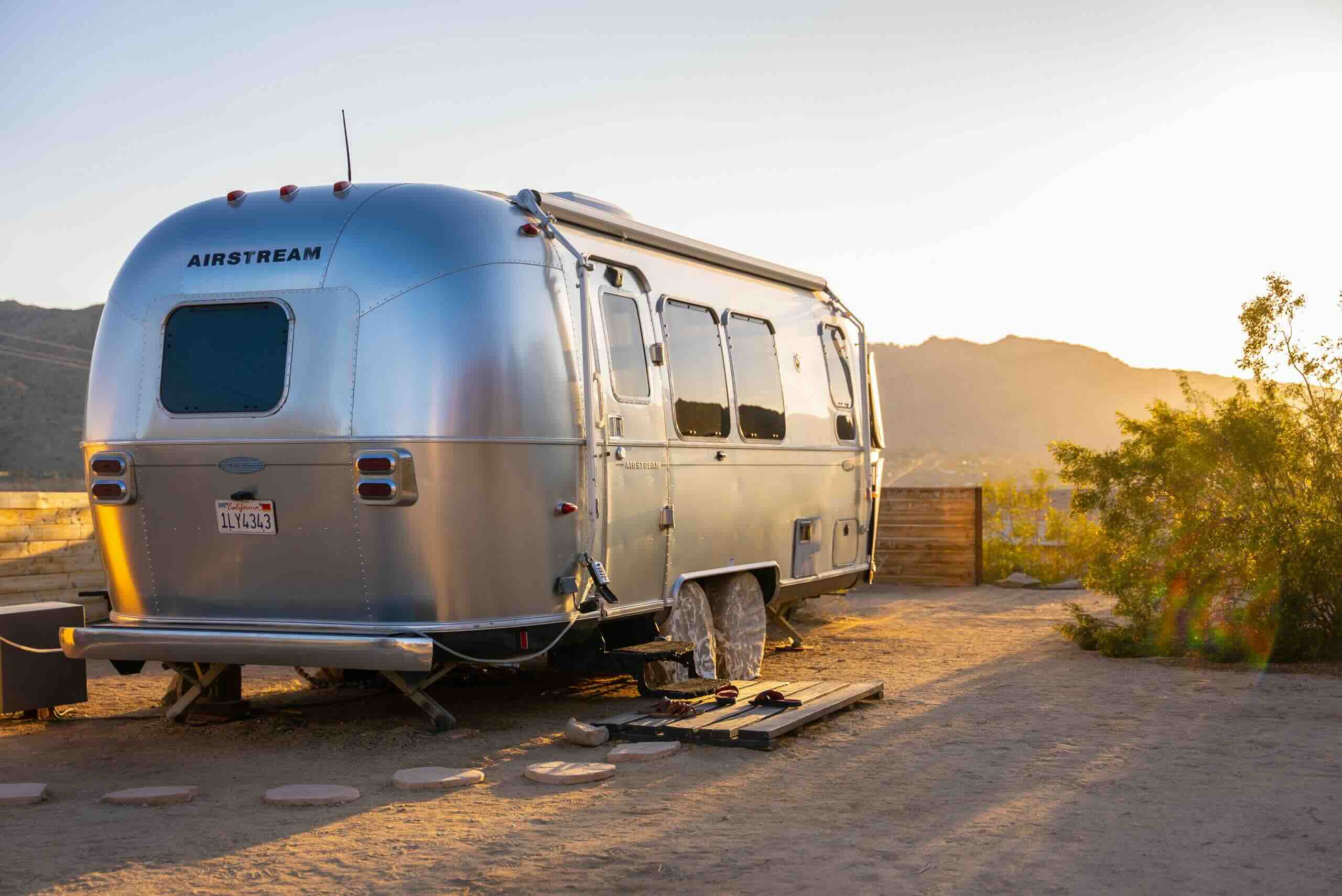Home>Home Maintenance>How Does An RV Air Conditioner Work
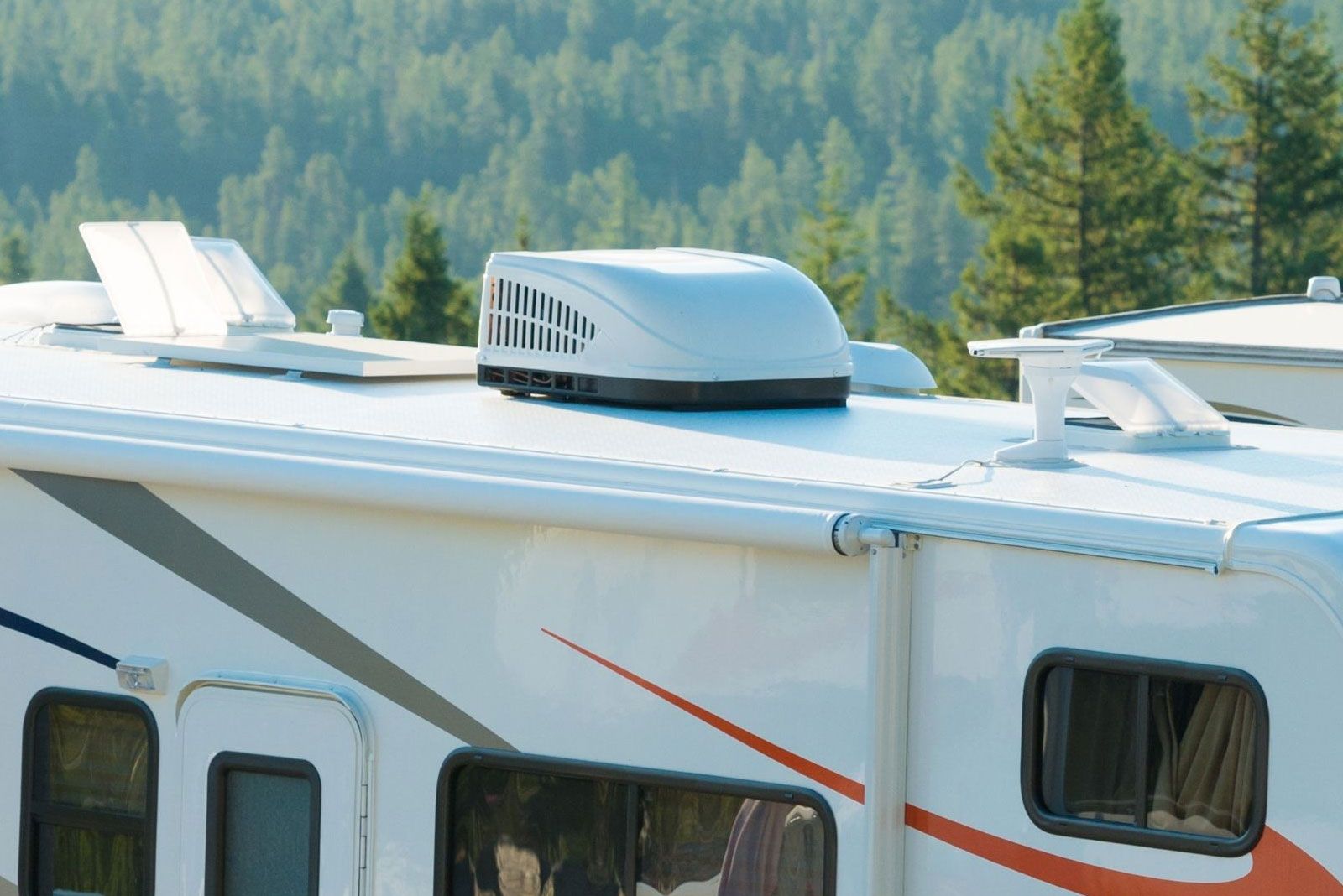

Home Maintenance
How Does An RV Air Conditioner Work
Modified: March 7, 2024
Learn how an RV air conditioner works and the key components involved. Discover maintenance tips to keep your RV cooling system in top condition.
(Many of the links in this article redirect to a specific reviewed product. Your purchase of these products through affiliate links helps to generate commission for Storables.com, at no extra cost. Learn more)
Introduction
Welcome to the world of RVing, where adventures await and memories are made. Whether you are a full-time RV enthusiast or enjoy occasional camping trips, a reliable and efficient air conditioner is essential to keep you cool and comfortable during your travels. In this article, we will dive into the inner workings of an RV air conditioner, explore its components, understand its basic operation, discuss different types, and provide maintenance and troubleshooting tips to ensure optimal performance.
An RV air conditioner is specifically designed to withstand the unique challenges of life on the road. It is compact, lightweight, and operates efficiently to provide indoor comfort even in the scorching heat of summer. By understanding how this essential piece of equipment works, you can make informed decisions about your RV’s cooling system and ensure its longevity.
Let’s start by exploring the components that make up an RV air conditioner.
Key Takeaways:
- RV air conditioners work by circulating refrigerant through components like the compressor, evaporator, and condenser to cool the air inside the vehicle, ensuring comfort during travels, just like a mini fridge for your RV!
- RV air conditioners can be powered by 110-volt AC, generators, or solar power, offering flexibility for different camping styles. Regular maintenance, like cleaning filters and checking for leaks, is crucial for optimal performance and longevity.
Read more: How Does A Rv Toilet Work
Components of an RV Air Conditioner
An RV air conditioner is a complex system composed of several key components that work together to provide cool air inside your vehicle. Understanding these components will give you a better grasp of how the air conditioner operates and assist you in troubleshooting any issues that may arise.
1. Compressor: The compressor is the heart of the air conditioner, responsible for circulating the refrigerant through the system. It pressurizes the low-pressure refrigerant gas, raising its temperature and transforming it into a high-pressure gas.
2. Evaporator: The evaporator is located inside the RV and is responsible for cooling the air. As the high-pressure refrigerant gas flows through the evaporator coil, it absorbs heat from the surrounding air, causing the refrigerant to turn into a low-pressure gas.
3. Condenser: The condenser is situated outside the RV and plays a crucial role in releasing heat from the system. It receives the high-pressure refrigerant gas from the compressor and cools it down, causing the refrigerant to condense into a liquid state.
4. Expansion Valve: The expansion valve is a small device positioned between the evaporator and condenser. It regulates the flow of refrigerant into the evaporator, allowing the refrigerant to expand and cool down rapidly before entering the evaporator coil.
These components work together in a continuous cycle to cool the air inside your RV. The refrigerant, in its gas form, travels from the compressor to the condenser, where it releases heat and transforms into a liquid. It then passes through the expansion valve, where it rapidly expands and cools down before flowing into the evaporator. In the evaporator, the refrigerant absorbs heat from the indoor air, turning back into a low-pressure gas, and the process repeats.
Now that we have a good understanding of the components, let’s explore the basic operation of an RV air conditioner.
Basic Operation of an RV Air Conditioner
An RV air conditioner operates on a refrigeration cycle, similar to the system used in your home’s refrigerator or central air conditioning unit. The refrigeration cycle consists of four main steps: compression, condensation, expansion, and evaporation.
1. Compression: The first step in the refrigeration cycle occurs in the compressor. The compressor pressurizes the low-pressure refrigerant gas, raising its temperature and transforming it into a high-pressure gas. This process requires energy and is typically powered by electricity.
2. Condensation: The high-pressure gas then flows from the compressor to the condenser, located outside the RV. In the condenser, the refrigerant releases heat to the surrounding air, causing it to cool down and convert into a high-pressure liquid. The condenser typically has coils and fins to maximize heat transfer and increase efficiency.
3. Expansion: After leaving the condenser, the high-pressure liquid refrigerant passes through the expansion valve, which regulates its flow into the evaporator. Inside the evaporator, the pressure drops rapidly, causing the refrigerant to expand and convert into a low-pressure gas. This expansion process results in a significant drop in temperature.
4. Evaporation: The low-pressure gas refrigerant enters the evaporator coil, which is located inside the RV. As the warm indoor air from the RV passes over the cold evaporator coil, the refrigerant absorbs heat from the air, causing the air to cool down. The cooled air is then distributed throughout the RV via fans or ducts.
This continuous refrigeration cycle ensures that the interior of your RV remains cool and comfortable, even on the hottest days. The compressor keeps the refrigerant circulating, while the condenser releases heat, the expansion valve controls flow, and the evaporator absorbs heat to provide cool air.
Now that we have a solid understanding of the basic operation of an RV air conditioner, let’s explore the different types of air conditioners commonly used in RVs.
Types of RV Air Conditioners
When it comes to RV air conditioners, there are primarily two types that are commonly used: roof-mounted air conditioners and portable air conditioners. Each type has its own advantages and considerations, so let’s take a closer look at these options.
1. Roof-mounted air conditioners: As the name suggests, roof-mounted air conditioners are installed on the roof of the RV. These units are highly popular due to their efficient cooling capacity and space-saving design. They are typically ducted systems, meaning they distribute cool air through a network of ducts to different areas of the RV.
Roof-mounted air conditioners boast powerful cooling capabilities, making them ideal for larger RVs or those seeking maximum cooling efficiency. They are also known for their quiet operation, which ensures a peaceful environment inside the vehicle. Additionally, these units are seamlessly integrated into the roof, reducing the risk of theft or damage.
2. Portable air conditioners: Portable air conditioners offer a more flexible cooling option for RV owners. These units are freestanding and can be placed anywhere inside the RV, usually near a window or vent for proper exhaust ventilation. Portable air conditioners are a popular choice for smaller RVs or those who prioritize portability and versatility.
One significant advantage of portable air conditioners is that they do not require permanent installation or changes to the RV’s structure. They are easy to set up, simply requiring an external vent to exhaust hot air. Another benefit is that they can be easily moved to different areas within the RV or even used outside the vehicle for other purposes.
However, it’s important to note that portable air conditioners may have slightly lower cooling efficiency compared to roof-mounted units. They also require floor space inside the RV and can be a bit noisier due to the proximity of the compressor and fan.
Ultimately, the choice between a roof-mounted air conditioner and a portable air conditioner depends on your specific needs and preferences. Consider factors such as the size of your RV, desired cooling capacity, available space, ease of installation, and portability when making a decision.
Now that we’ve covered the types of RV air conditioners, let’s explore the different power sources that can be used to operate these units.
Regular maintenance of your RV air conditioner is important to ensure it works efficiently. Clean or replace the air filters regularly and check for any leaks in the system.
Power Sources for RV Air Conditioners
RV air conditioners typically require a reliable power source to operate. Let’s take a closer look at the different power sources commonly used for RV air conditioners.
1. 110-volt AC power: The most common and convenient power source for RV air conditioners is a 110-volt AC power supply. Many RVs are equipped with electrical hookups at campgrounds or RV parks that provide this type of power. When connected to a 110-volt AC power source, the air conditioner can be operated just like a typical household air conditioner. This power source ensures a steady and reliable flow of electricity to cool your RV efficiently.
2. Generator: If you are camping off-grid or don’t have access to a power hookup, a generator can be used to power your RV air conditioner. A generator converts fuel, such as gasoline or propane, into electrical energy. It provides the necessary power to run the air conditioner, appliances, and other electrical devices in your RV. Generators come in various sizes and capacities, so it’s important to choose one that meets the power requirements of your air conditioner.
When using a generator, it’s essential to ensure that it is properly sized and compatible with your RV’s electrical system. It’s also important to consider noise levels and any specific campground or park regulations regarding generator usage.
3. Solar power: Solar power is an increasingly popular and eco-friendly option for RV owners. Solar panels capture sunlight and convert it into electrical energy, which can be used to power various appliances, including air conditioners. Solar power is a sustainable and renewable energy source that allows you to enjoy camping while minimizing your environmental impact.
Solar power systems for RVs typically consist of solar panels, a charge controller, batteries, and an inverter. The panels collect sunlight and generate electricity, which is stored in the batteries. The charge controller regulates the battery charging process, while the inverter converts the stored DC power into AC power for use by the air conditioner and other devices.
It’s important to note that the feasibility of using solar power for running an air conditioner depends on factors such as the number and efficiency of your solar panels, battery capacity, and the power requirements of your air conditioner. Proper sizing and installation are crucial to ensure effective solar power utilization.
Considering your power options and planning accordingly will ensure that you have a reliable source of electricity to keep your RV air conditioner running smoothly during your travels.
Now that we’ve explored the power sources for RV air conditioners, let’s discuss some maintenance and troubleshooting tips to help you keep your air conditioner in top shape.
Read more: How Does An Air Conditioner Work?
Maintenance and Troubleshooting Tips for RV Air Conditioners
Maintaining and troubleshooting your RV air conditioner is essential to ensure its optimal performance and longevity. Regular maintenance and addressing any potential issues promptly can help you avoid costly repairs and keep your air conditioner running smoothly throughout your adventures. Here are some important tips to keep in mind:
1. Cleaning the filters: The filters in your RV air conditioner play a crucial role in maintaining clean and healthy indoor air quality. Over time, these filters can become clogged with dust, dirt, and debris, limiting airflow and reducing cooling efficiency. Regularly cleaning or replacing the filters is essential to ensure unrestricted airflow. Consult your air conditioner’s manual for instructions on cleaning or replacing the filters.
2. Checking for leaks: Inspect the air conditioner’s unit and ductwork for any signs of leaks or damage. Leaks can lead to loss of refrigerant and reduced cooling performance. Look for water stains, discoloration, or moisture buildup around the unit, as these can indicate a leak. If you suspect a leak, it is advisable to consult a professional for proper diagnosis and repair.
3. Maintaining proper airflow: Adequate airflow is crucial for the efficient operation of your RV air conditioner. Ensure that the air vents and ducts are not blocked or obstructed by furniture, curtains, or other objects. Additionally, keep the outdoor unit clear of vegetation, debris, and any obstructions that can impede the airflow. Proper airflow helps the air conditioner to cool your RV effectively and prevents strain on the system.
4. Common issues and solutions: Some common problems that RV owners may encounter with their air conditioners include uneven cooling, strange noises, and failure to turn on. These issues can have various causes, such as faulty thermostats, electrical problems, or compressor issues. If you experience any of these problems, consider checking the thermostat settings, ensuring proper power supply, and inspecting the compressor for any visible signs of damage or malfunction. If the problem persists, it is recommended to seek professional assistance from an RV service technician who specializes in air conditioning systems.
Regular maintenance and prompt troubleshooting can help you identify and resolve issues with your RV air conditioner before they escalate. Following these tips will not only ensure comfortable indoor temperatures during your travels but also extend the lifespan of your air conditioner.
Now that we’ve covered maintenance and troubleshooting tips, let’s wrap up with some final thoughts.
Conclusion
An RV air conditioner is a crucial component of your mobile home, keeping you cool and comfortable during your adventures on the road. Understanding how your air conditioner works and knowing how to properly maintain and troubleshoot it will ensure its optimal performance and longevity.
We explored the components of an RV air conditioner, including the compressor, evaporator, condenser, and expansion valve, and learned how they work together in the refrigeration cycle to provide cool air. We also discussed the two main types of RV air conditioners: roof-mounted and portable units, each with its own benefits and considerations.
When it comes to powering your RV air conditioner, options include 110-volt AC power, generators, and even solar power systems. Choosing the right power source for your needs and camping style is essential for a reliable and efficient cooling experience.
To keep your RV air conditioner in top shape, we provided maintenance tips such as cleaning or replacing filters, checking for leaks, and maintaining proper airflow. Additionally, we discussed common issues and suggested troubleshooting steps to help you diagnose and resolve any problems that may arise.
By following these maintenance and troubleshooting tips, you can ensure that your RV air conditioner remains reliable, efficient, and cost-effective. Regular maintenance and prompt action when issues arise can save you time and money in the long run, extending the lifespan of your air conditioner and enhancing your overall camping experience.
Remember, if you’re ever unsure about any aspect of your RV air conditioner, it’s always best to consult with a professional technician familiar with RV air conditioning systems.
Now you can embark on your next RV adventure with the confidence that your air conditioner is ready to keep you cool and comfortable, allowing you to fully enjoy the wonders of the open road.
Frequently Asked Questions about How Does An RV Air Conditioner Work
Was this page helpful?
At Storables.com, we guarantee accurate and reliable information. Our content, validated by Expert Board Contributors, is crafted following stringent Editorial Policies. We're committed to providing you with well-researched, expert-backed insights for all your informational needs.
